The Science
of Tooth Color
All smiles have something in common, and that is the colors that make up human teeth shades. From A1 to D4, all shades of teeth express a narrow range of red-to-yellow color.
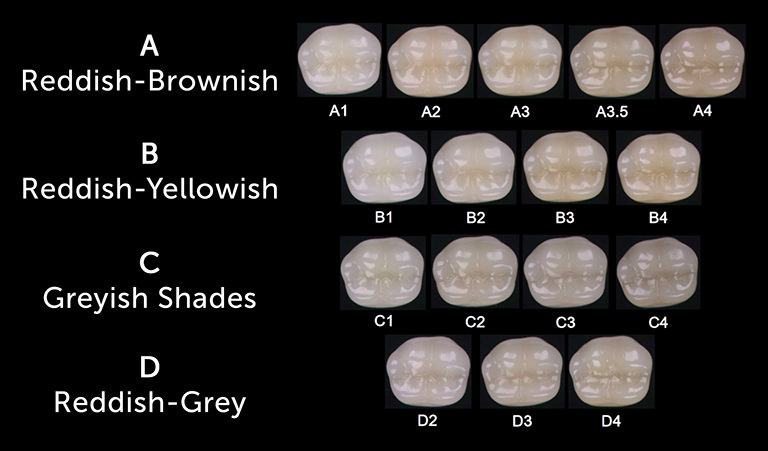
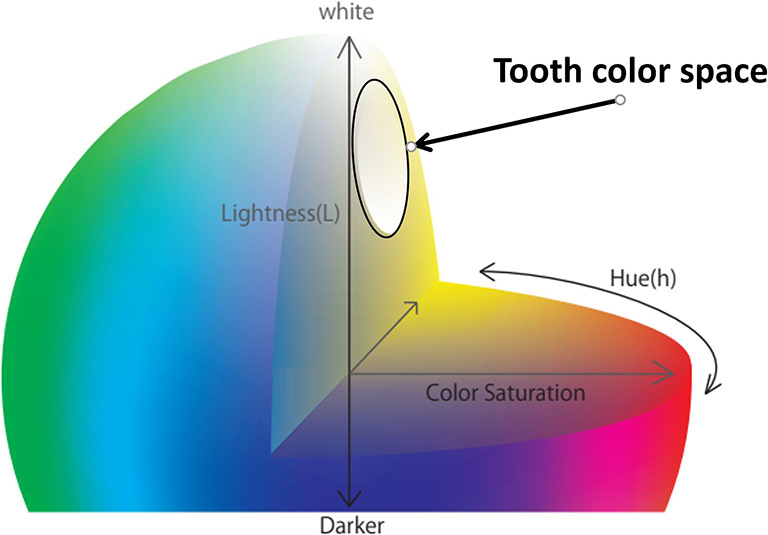
To match every smile, most composite brands require multiple shades. That’s because most composites today depend on the color of red and yellow dyes added to the resin material to emulate tooth shades. This means that dentists must keep a large inventory of different composites to accommodate a variety of patients.
OMNICHROMA FLOW
is the world’s first dental flowable composite to utilize structural color as its main color mechanism.
Structural Color
Structural color occurs when different wavelengths of light are amplified or weakened by the structure of a material itself, expressing colors other than what the material may actually be. From morpho butterflies to peacocks, some of the rarest and most beautiful colors in nature are the result of structural color.
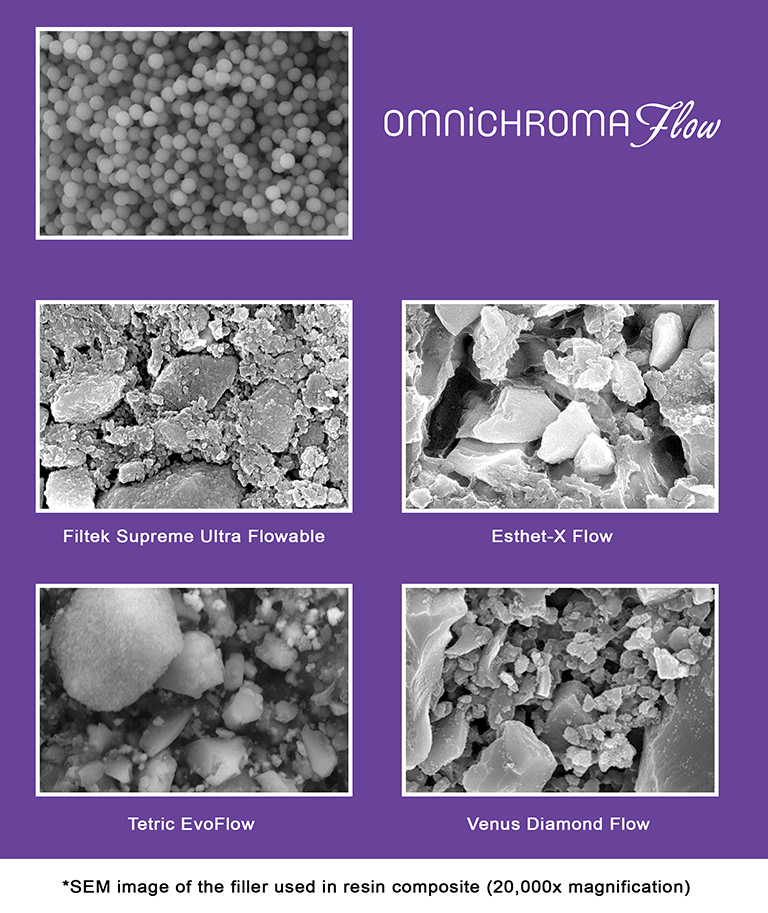
OMNICHROMA FLOW fillers generate red-to-yellow structural color as ambient light passes through the composite, without the need of added pigments and dyes. The red-to-yellow color combines with the reflected color of the patient’s surrounding dentition, creating the perfect match from A1 to D4 and beyond.
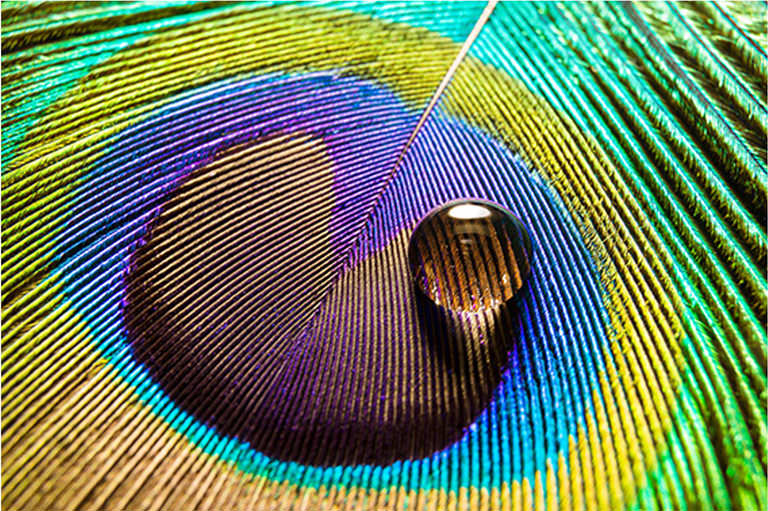
Smart Chromatic
Technology
Through the utilization of Tokuyama’s spherical fillers and Smart Chromatic Technology, the OMNICHROMA product family is the first to use structural color in composite dentistry.
OMNICHROMA FLOW’s structural color mechanism is made possible by the precise shape and size of the filler within the composite. The 260nm identical spherical fillers of OMNICHROMA FLOW are the perfect size and shape to produce the effects of structural color to match the surrounding tooth color.

Excellent color match
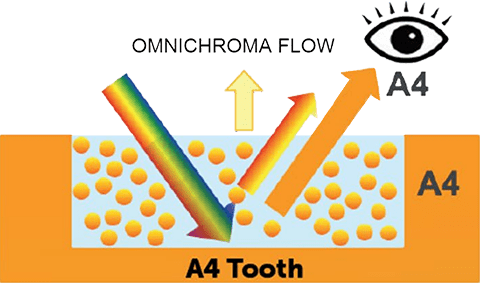
Excellent color match
